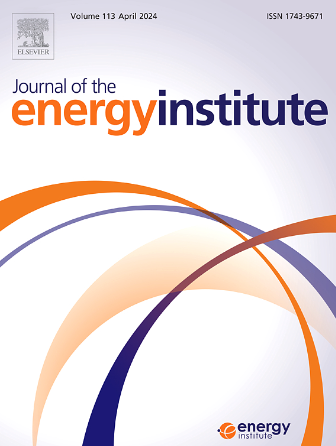Analysis of nano-particle emissions from gasoline direct injection engines utilizing non-thermal plasma and nickel foam technologies
IF 5.6
2区 工程技术
Q2 ENERGY & FUELS
引用次数: 0
Abstract
The present investigation aims to assess the efficacy of the integration of Non-Thermal Plasma (NTP) technology with porous substrates, particularly nickel foam, for the mitigation of particulate matter (PM) emissions originating from Gasoline Direct Injection (GDI) engines. GDI engines, while offering enhanced fuel efficiency, are associated with higher concentrations of ultrafine PM, which pose significant environmental and health risks. Nickel foam, selected for its high surface area, thermal stability, and catalytic properties, is utilized to enhance PM filtration. Experimental results demonstrate that the integration of NTP technology with nickel foam significantly reduces both the number and mass of particles emitted by GDI engines. Specifically, PM removal efficiencies of up to 83 % were achieved at higher voltages (10 kV). However, energy consumption was found to increase substantially with voltage, emphasizing the need to optimize the balance between energy input and PM reduction. The study further reveals that increasing the thickness of the nickel foam from 0 to 6 mm enhances PM capture, but also increases the specific energy density required for PM reduction. The results showed that at lower voltages (2–4 kV), the combination of NTP and nickel foam was particularly effective, achieving significant PM reduction with lower energy consumption.
利用非热等离子体和泡沫镍技术分析汽油直喷发动机的纳米颗粒排放
本研究旨在评估将非热等离子体(NTP)技术与多孔基材(特别是泡沫镍)相结合的效果,以减少汽油直喷(GDI)发动机产生的颗粒物(PM)排放。GDI发动机虽然提高了燃油效率,但与高浓度的超细PM有关,这对环境和健康构成了重大风险。泡沫镍因其高表面积、热稳定性和催化性能而被选中,用于增强PM过滤。实验结果表明,将NTP技术与泡沫镍相结合,可以显著降低直喷发动机的颗粒排放数量和质量。具体来说,在更高电压(10 kV)下,PM的去除效率高达83%。然而,发现能量消耗随着电压的增加而大幅增加,强调需要优化能量输入和PM减少之间的平衡。研究进一步表明,将泡沫镍的厚度从0增加到6 mm可以增强PM捕获,但也增加了PM还原所需的比能量密度。结果表明,在较低的电压下(2-4 kV), NTP和泡沫镍的组合特别有效,在较低的能耗下实现了PM的显著降低。
本文章由计算机程序翻译,如有差异,请以英文原文为准。
求助全文
约1分钟内获得全文
求助全文
来源期刊

Journal of The Energy Institute
工程技术-能源与燃料
CiteScore
10.60
自引率
5.30%
发文量
166
审稿时长
16 days
期刊介绍:
The Journal of the Energy Institute provides peer reviewed coverage of original high quality research on energy, engineering and technology.The coverage is broad and the main areas of interest include:
Combustion engineering and associated technologies; process heating; power generation; engines and propulsion; emissions and environmental pollution control; clean coal technologies; carbon abatement technologies
Emissions and environmental pollution control; safety and hazards;
Clean coal technologies; carbon abatement technologies, including carbon capture and storage, CCS;
Petroleum engineering and fuel quality, including storage and transport
Alternative energy sources; biomass utilisation and biomass conversion technologies; energy from waste, incineration and recycling
Energy conversion, energy recovery and energy efficiency; space heating, fuel cells, heat pumps and cooling systems
Energy storage
The journal''s coverage reflects changes in energy technology that result from the transition to more efficient energy production and end use together with reduced carbon emission.
 求助内容:
求助内容: 应助结果提醒方式:
应助结果提醒方式:


